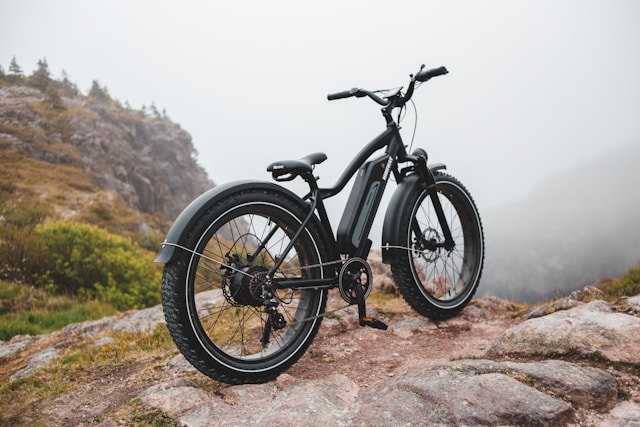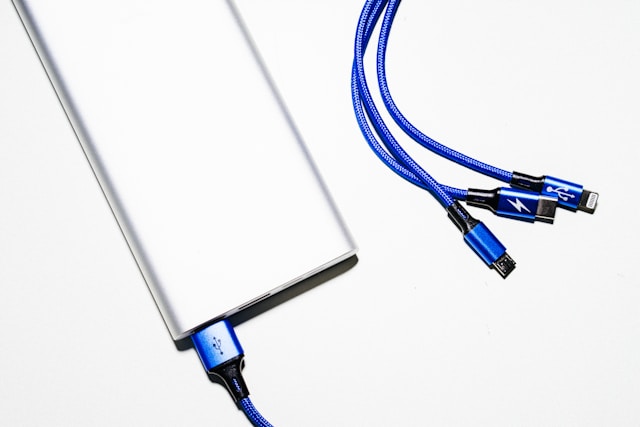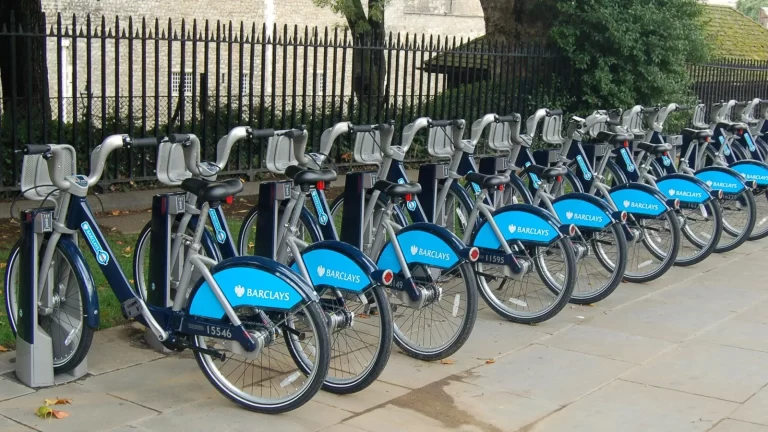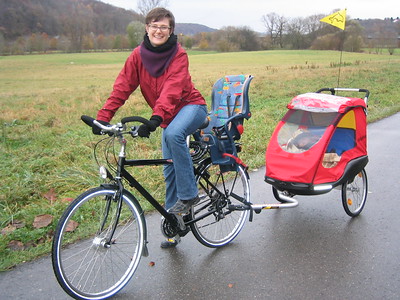Exploring How Electric Bikes Master Different Terrain
Electric bikes, often referred to as e-bikes, have surged in popularity in recent years, revolutionizing the way people commute, explore, and exercise. Combining the convenience of traditional bicycles with the added power and assistance of electric motors, these vehicles offer a versatile and eco-friendly transportation alternative.
As urban centers become more congested and environmental concerns continue to rise, electric bikes have emerged as a practical solution for many commuters seeking efficient and sustainable transportation options. With advancements in technology, electric bikes now come in various styles and designs, catering to a wide range of preferences and needs.
However, beyond their utility in urban environments, electric bikes also hold tremendous potential for outdoor enthusiasts and adventure seekers. Whether navigating rugged mountain trails, cruising along scenic countryside paths, or tackling challenging off-road terrain, electric bikes offer riders the opportunity to explore new landscapes and conquer obstacles with ease.
Understanding how electric bikes handle different terrain is paramount for riders looking to maximize their enjoyment and safety. From the type of tires to the power of the motor, every component plays a crucial role in determining how well an electric bike performs on various surfaces. Whether it’s gravel, dirt, mud, or pavement, knowing how to optimize your electric bike setup can make all the difference in your riding experience.
In this guide, we’ll delve into the intricacies of electric bike terrain handling, exploring the key components, features, and techniques that enable riders to navigate diverse landscapes with confidence. From selecting the right tires and adjusting motor power to mastering techniques for climbing steep inclines, we’ll provide practical insights and tips to help you get the most out of your electric bike adventures. So saddle up, and let’s explore how electric bikes master different terrain!
Key Takeaways
- Choose the right tire type and pressure for the terrain you’ll encounter.
- Adjust motor power and assist modes to match the terrain’s demands.
- Maintain proper battery capacity for longer rides on challenging terrain.
- Invest in a bike with quality suspension and braking systems for enhanced control.
- Practice good weight distribution and body positioning for stability on rough terrain.
- Learn and apply techniques for navigating steep inclines and descents safely.
- Regularly maintain your electric bike to ensure optimal performance on all terrain types.
Understanding Electric Bike Components for Terrain Mastery
Electric bikes are equipped with various components that significantly influence their performance and handling on different terrain types. Understanding these components is crucial for mastering terrain and maximizing your riding experience.
Motor Power: The motor power of an electric bike determines its ability to tackle inclines and rough terrain with ease. Higher wattage motors provide more torque, allowing riders to conquer steep hills and challenging trails effortlessly. When choosing an electric bike for off-road adventures, opting for a motor with sufficient power ensures you have the necessary assistance to navigate diverse terrain effectively.
Battery Capacity: Battery capacity plays a vital role in determining the range and endurance of an electric bike, especially on demanding terrain. Longer rides on hilly or rugged terrain can drain the battery more quickly, so selecting a bike with ample battery capacity ensures you can explore without worrying about running out of power. Additionally, consider factors such as battery type and charging time to optimize your electric bike experience.
Tire Type: The type of tires fitted to an electric bike has a significant impact on its traction, stability, and comfort on different surfaces. For off-road adventures, knobby or wide tires with aggressive tread patterns provide better grip and control on gravel, dirt, and muddy trails. On the other hand, slick or semi-slick tires are ideal for smooth pavement and urban commuting. Choosing the right tire type for your intended terrain ensures optimal performance and safety.
Suspension Systems and Frame Geometry: Suspension systems, including front forks and rear shocks, absorb impacts and vibrations from rough terrain, enhancing rider comfort and control. Electric bikes equipped with suspension systems offer smoother rides on uneven surfaces, reducing fatigue and improving handling. Additionally, frame geometry plays a crucial role in stability and maneuverability, especially when navigating tight corners or technical terrain. Selecting a bike with appropriate suspension and frame geometry for your riding style ensures a more enjoyable and confidence-inspiring experience on diverse terrain.
Weight Distribution and Braking Systems: Proper weight distribution is essential for maintaining balance and stability, particularly when riding on challenging terrain. Distributing weight evenly between the front and rear of the bike improves traction and control, especially when climbing or descending steep slopes. Additionally, quality braking systems are essential for controlling speed and stopping safely, especially on steep descents or slippery surfaces. Hydraulic disc brakes offer superior stopping power and modulation, providing riders with confidence and control in various riding conditions.
Understanding how these electric bike components interact and impact terrain handling is essential for selecting the right bike and optimizing your riding experience. By considering factors such as motor power, battery capacity, tire type, suspension systems, frame geometry, weight distribution, and braking systems, riders can confidently tackle diverse terrain with ease and enjoyment.
RELATED CONTENT – What is the Best Electric Bike for Hills?
Tailoring Electric Bike Features for Specific Terrain
When it comes to mastering different terrain types on an electric bike, riders can optimize their experience by tailoring specific features to match the demands of the terrain they’ll encounter. Here’s how you can adjust key components to enhance performance and enjoyment:
Optimizing Motor Power and Battery Capacity for Hilly Terrain: Hilly terrain presents unique challenges for electric bike riders, as steep inclines can quickly drain battery power and put strain on the motor. To tackle hills effectively, it’s essential to select an electric bike with sufficient motor power and battery capacity. High-torque motors paired with large-capacity batteries provide the necessary assistance to conquer uphill climbs with ease. Additionally, riders can conserve battery power by using lower assist modes on flat or downhill sections, reserving higher power settings for challenging ascents. By optimizing motor power and battery capacity for hilly terrain, riders can maintain momentum and enjoy longer rides without worrying about running out of power.
Selecting Appropriate Tire Types for Different Surfaces: The type of tires fitted to an electric bike significantly impacts its traction, stability, and performance on various surfaces. For hilly terrain with loose gravel or dirt, knobby tires with aggressive tread patterns offer superior grip and control, allowing riders to maintain traction while climbing steep slopes. On smooth pavement or urban streets, slick or semi-slick tires provide reduced rolling resistance and improved efficiency. By selecting the appropriate tire type for the terrain they’ll encounter, riders can optimize their electric bike’s handling and maximize traction, stability, and comfort.
Adjusting Suspension Settings for Enhanced Comfort and Control on Rough Terrain: Riding on rough terrain such as rocky trails or uneven paths can be jarring and uncomfortable without proper suspension support. Electric bikes equipped with front forks and rear shocks offer riders the ability to adjust suspension settings to match the demands of the terrain. By tuning suspension preload, damping, and rebound settings, riders can enhance comfort, control, and stability while traversing rough terrain. Softening suspension settings absorb impacts and vibrations more effectively, reducing fatigue and improving traction, while stiffer settings provide greater responsiveness and control on smoother surfaces. By adjusting suspension settings to suit the terrain, riders can enjoy a smoother, more confidence-inspiring ride on a variety of surfaces.
By tailoring electric bike features such as motor power, battery capacity, tire type, and suspension settings to match the demands of specific terrain types, riders can optimize performance, comfort, and control, allowing them to tackle diverse landscapes with confidence and enjoyment.
Tips and Techniques for Electric Bike Handling on Diverse Terrain
Mastering electric bike handling on diverse terrain requires a combination of skill, technique, and adaptability. Here are some tips and techniques to help riders navigate various landscapes with confidence and control:
Adjusting Assist Modes for Optimal Performance on Varied Terrain: Most electric bikes come equipped with multiple assist modes, allowing riders to adjust the level of motor assistance based on the terrain they’re riding. On flat or smooth surfaces, riders can utilize lower assist levels to conserve battery power and maintain a comfortable cruising speed. When tackling steep inclines or challenging terrain, switching to higher assist modes provides the extra power needed to conquer hills with ease. Experimenting with different assist modes and finding the right balance between power and efficiency allows riders to optimize performance and extend battery life on varied terrain.
Maintaining Stability and Control on Gravel, Dirt, and Rocky Trails: Riding on loose gravel, dirt, or rocky trails requires careful attention to stability and control to avoid slipping or losing traction. To maintain stability on uneven surfaces, riders should keep their weight centered over the bike and maintain a relaxed grip on the handlebars. Using a wider stance and slightly bending the knees helps absorb shocks and vibrations, enhancing stability and control. Additionally, maintaining a consistent pedal cadence and avoiding sudden movements or sharp turns minimizes the risk of losing traction or veering off course. By staying attentive and proactive, riders can navigate gravel, dirt, and rocky trails with confidence and control.
Navigating Steep Inclines and Descents Safely: Steep inclines and descents pose unique challenges for electric bike riders, requiring careful technique and strategy to navigate safely. When climbing steep hills, riders should shift to lower gears and maintain a steady pedal cadence to conserve energy and prevent motor strain. Leaning forward slightly and keeping the weight centered over the front wheel improves traction and stability, minimizing the risk of wheel spin or loss of control. Conversely, when descending steep slopes, riders should shift their weight back, lower their center of gravity, and use both brakes evenly to maintain control and prevent skidding. By mastering proper climbing and descending techniques, riders can conquer steep terrain with confidence and safety.
By implementing these tips and techniques, riders can enhance their electric bike handling skills and tackle diverse terrain with confidence and control. Whether cruising along smooth pavement, navigating gravel paths, or conquering steep mountain trails, adapting to the demands of the terrain ensures a safe and enjoyable riding experience for all.
RELATED CONTENT – Unlocking Best Practices for Electric Bike Battery Storage and Charging
Key Considerations for Off-Road Electric Bike Adventures
Embarking on off-road electric bike adventures requires careful consideration of various factors to ensure a safe, enjoyable, and successful ride. Here are key considerations to keep in mind when venturing off the beaten path:
Selecting a Suitable Frame Geometry for Off-Road Riding: The frame geometry of an electric bike plays a crucial role in its stability, agility, and maneuverability on off-road terrain. Off-road electric bikes typically feature rugged frames with relaxed geometry, offering a comfortable riding position and enhanced stability over uneven surfaces. Longer wheelbases and slacker head tube angles provide greater stability at higher speeds and improved handling on descents, while shorter chainstays and steeper seat tube angles enhance agility and responsiveness when navigating tight corners and technical terrain. Choosing a bike with a suitable frame geometry for off-road riding ensures optimal performance and comfort on rugged trails and challenging terrain.
Optimizing Tire Pressure for Traction and Comfort on Trails: Tire pressure significantly impacts an electric bike’s traction, comfort, and performance on trails. For off-road adventures, riders should adjust tire pressure based on trail conditions, riding style, and personal preferences. Lower tire pressure increases the contact patch between the tire and the trail, improving traction and control on loose surfaces like gravel, dirt, and mud. However, excessively low tire pressure can lead to pinch flats and rim damage, so riders should strike a balance between traction and durability. Experimenting with different tire pressures and finding the optimal setting for your riding conditions ensures a smoother, more confident ride on off-road trails.
Selecting Accessories Like Fenders and Lights for Off-Road Adventures: When embarking on off-road electric bike adventures, selecting the right accessories can enhance safety, comfort, and convenience. Fenders help protect riders from mud, water, and debris kicked up by the tires, keeping clothing and equipment clean and dry during wet and muddy conditions. Additionally, installing lights on your electric bike ensures visibility and safety when riding in low-light conditions or after dark. Front and rear lights increase visibility to other trail users and help riders navigate dark trails and forested areas with confidence. Choosing durable, weather-resistant accessories designed specifically for off-road riding ensures they can withstand the rigors of trail riding and provide reliable performance when you need it most.
By considering these key considerations and selecting the appropriate equipment and accessories, riders can maximize their enjoyment and safety during off-road electric bike adventures. Whether exploring rugged mountain trails, conquering challenging singletrack, or embarking on multi-day bikepacking trips, being well-prepared and equipped ensures a memorable and rewarding off-road riding experience.
RELATED CONTENT – Electric Bike Buying Guide
FAQs
Q1: Can electric bikes handle rough terrain like mountain trails or gravel paths? A: Yes, electric bikes are designed to handle a variety of terrain types, including rough trails and gravel paths. However, the level of performance may vary depending on factors such as tire type, suspension system, and motor power. To optimize performance on rough terrain, riders should select electric bikes with features like knobby tires, front suspension forks, and high-torque motors. Additionally, maintaining proper tire pressure and adjusting suspension settings can enhance comfort and control on rugged trails.
Q2: How do I maintain stability and control while riding on slippery surfaces like wet pavement or muddy trails? A: Maintaining stability and control on slippery surfaces requires careful attention to technique and equipment. Riders should reduce speed and avoid sudden movements or sharp turns to minimize the risk of slipping or losing traction. Additionally, selecting tires with aggressive tread patterns and maintaining proper tire pressure can improve grip and traction on wet pavement or muddy trails. Riding in a lower gear and using gentle braking and acceleration inputs also helps maintain stability and control on slippery surfaces.
Q3: What should I do if I encounter steep inclines or descents during my ride? A: When encountering steep inclines, riders should shift to lower gears and maintain a steady pedal cadence to conserve energy and prevent motor strain. Leaning forward slightly and keeping the weight centered over the front wheel improves traction and stability, making it easier to climb hills. Conversely, when descending steep slopes, riders should shift their weight back, lower their center of gravity, and use both brakes evenly to maintain control and prevent skidding. Practicing proper climbing and descending techniques ensures a safe and enjoyable riding experience on steep terrain.
Q4: How can I extend the range of my electric bike on longer rides or challenging terrain? A: To extend the range of your electric bike on longer rides or challenging terrain, consider optimizing your riding style and adjusting assist modes to conserve battery power. Riding in lower assist levels and pedaling more actively can reduce the strain on the battery and increase efficiency. Additionally, maintaining a steady pace and avoiding abrupt acceleration or deceleration helps conserve energy and maximize range. Planning your route to include charging stations or carrying a spare battery can also provide peace of mind on longer rides.
Q5: Are there any specific maintenance tasks I should perform to keep my electric bike performing well on different terrain types? A: Regular maintenance is essential for keeping your electric bike performing well on different terrain types. Tasks such as checking tire pressure, cleaning and lubricating the chain, inspecting brakes and brake pads, and tightening bolts and fasteners ensure optimal performance and safety. Additionally, inspecting suspension components and adjusting settings as needed can improve comfort and control on rough terrain. Following the manufacturer’s maintenance schedule and performing routine checks before each ride helps prevent issues and ensures a smooth riding experience on any terrain.
Conclusion
Navigating the diverse terrain on an electric bike is an exhilarating experience that offers riders endless opportunities for exploration and adventure. By understanding the key components, features, and techniques for mastering different terrain types, riders can enhance their performance, safety, and enjoyment on every ride.
From adjusting assist modes and selecting the right tires to mastering climbing and descending techniques, riders have the tools and knowledge to conquer any landscape with confidence and control. Whether cruising along smooth pavement, tackling rugged mountain trails, or exploring scenic countryside paths, electric bikes empower riders to venture further, faster, and with greater ease than ever before.
As you set out on your electric bike adventures, keep in mind to stay curious, adaptable, and ready for whatever the trail may present. By refining your skills, fine-tuning your equipment, and embracing the challenges of varied terrain, you’ll encounter fresh thrills, vistas, and experiences that will ignite your love for riding.
External Sources
- Electric Bike Review (electricbikereview.com) – A comprehensive resource for electric bike enthusiasts, featuring in-depth reviews, guides, and forums where riders share their experiences and tips.
- Electric Bike Forums (electricbikereview.com/forums) – An active online community where riders discuss topics related to electric bike terrain handling, share advice, and seek recommendations.
- BikeRadar (bikeradar.com) – A leading cycling website offering expert reviews, buying guides, and articles covering all aspects of electric bikes and terrain handling.
- EBR Forum (electricbike.com/forum) – The official forum of Electric Bike Report, where riders can connect with other enthusiasts, ask questions, and share insights on electric bike terrain handling.
Publications:
- “The Electric Bike Book” by Jim Turner – A comprehensive guidebook covering everything from choosing the right electric bike to mastering terrain handling techniques.
- “Electric Bicycles: A Guide to Design and Use” by William C. Morchin and Henry Oman – An informative resource exploring the design principles, technology, and usage considerations of electric bicycles, including terrain handling.
Kristina Grant is not just an enthusiast but a true authority on electric bikes. Nestled in the coastal beauty of Virginia, Kristina has found the perfect backdrop for her passion for electric biking. As a dedicated wife and homeschooling mom, her life revolves around family, faith, and the thrill of adventure.
Originally hailing from Ohio, Kristina's journey with electric bikes began as a curiosity and quickly evolved into a deep expertise. Her blog is a testament to her love for electric biking, combining her fascination for eco-friendly transportation with her coastal lifestyle.
When she's not cruising the beach on her electric bike, you'll find Kristina indulging in her other loves: long walks along the shore, getting lost in a good book, and cherishing moments with her loved ones. With a heart as big as her love for animals, especially cats, Kristina brings a unique perspective to the electric bike world, grounded in her strong faith in God and her dedication to a sustainable lifestyle.
Through her blog, Kristina shares her extensive knowledge of electric bikes, offering valuable insights, tips, and recommendations to fellow enthusiasts. Whether you're a seasoned rider or a newcomer to the electric bike scene, Kristina's blog is your go-to source for all things electric biking, fueled by her passion, expertise, and the scenic beauty of coastal Virginia.







